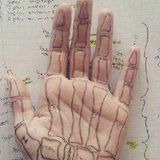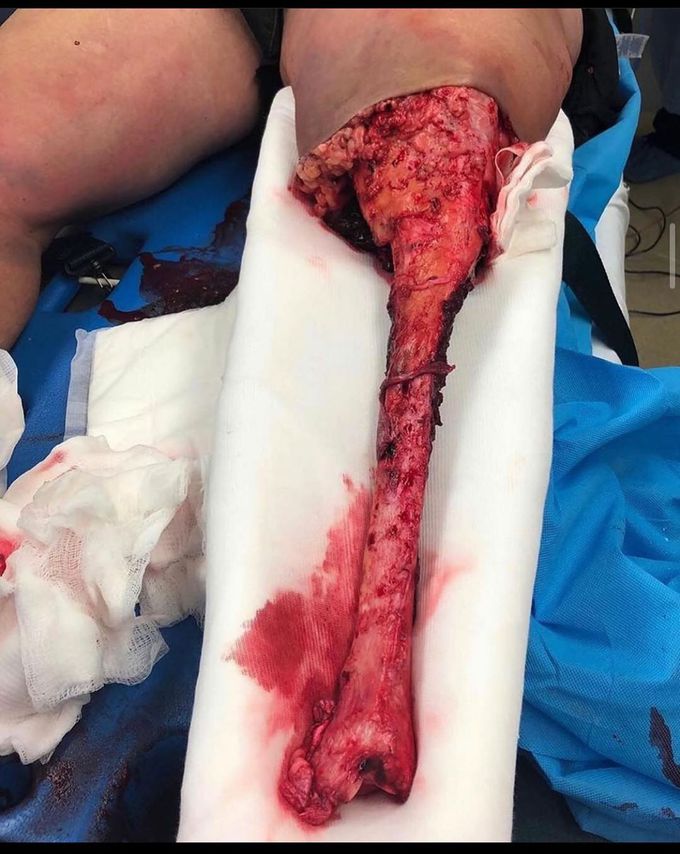


Traumatic amputation and degloving injury.
This severe leg trauma was the result of an MVA (motor vehicle accident)! The anatomy you’re seeing in this photo is the Tibia bone. Traumatic amputation refers to the way in which the amputation has occurred i.e. it is a sudden, violent and unexpected event that causes the loss of a person’s limbs. It is typically the result of high energy traumas with a combination of crushing, traction and bending forces The skin is often peeled (or degloved — a form of avulsion of soft tissue, in which an extensive portion of skin and subcutaneous tissue detaches from the underlying fascia, muscles, or bone tissue), with wide loss of substance caused by avulsion or ischemic The fascial compartments are often partially opened because of explosion or laceration and the muscular tissues are locally and regionally damaged by direct and indirect lesions. The decision to amputate or save the severely lesioned lower limb is difficult. Quantifying the severity of the trauma to decide to amputate or save a limb can be achieved by the score systems of lower limbs, the Mangled Extremity Severity Score (MESS), where age, shock, contamination level and treatment time are some of the deciding factors . In traumatic amputations where a limb cannot be re-attached, the injured person—or amputee—will most likely undergo surgery to shape the bone in the remaining limb, to clean the wound (debridement), and to close it . This may involve skin grafts, and could require more than one surgical procedure.
Source: https://www.instagram.com/p/B-cdKM2nBnU/?igshid=ssiz7xfnx39m
